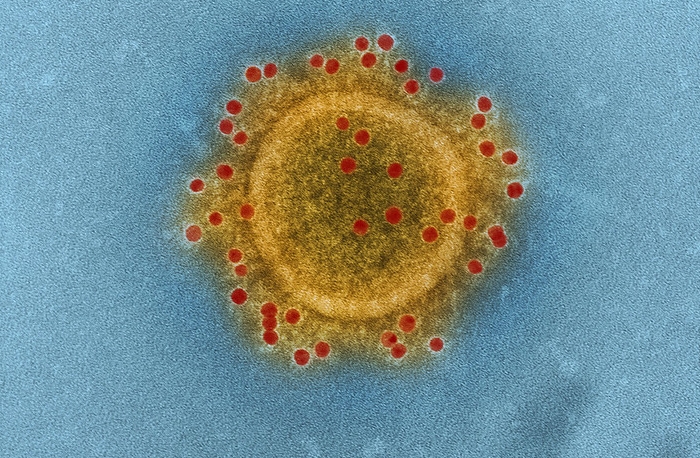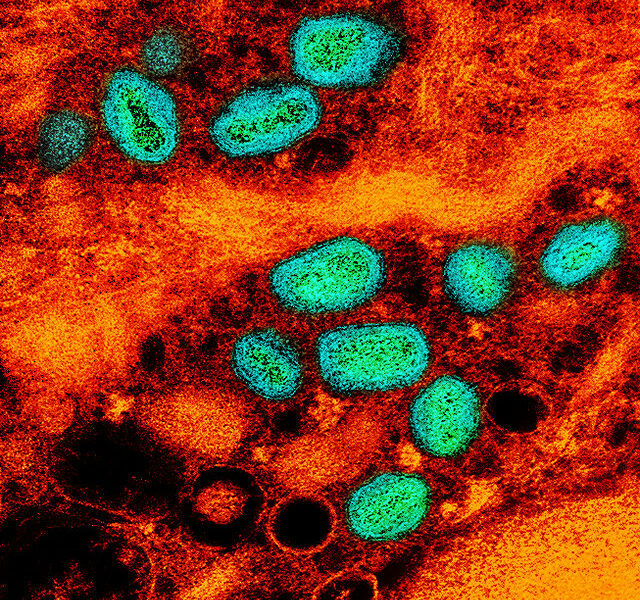By: Jiayan Liu
Image courtesy of NIAID via Flickr Creative Commons
On 31 December 2019, World Health Organization (WHO) China Country Office was informed of a cluster of cases of pneumonia of unknown cause detected in Wuhan City, China [1]. Scientists are increasingly concerned about it since the number of confirmed cases continues to rise. Since initial detection, the coronavirus has transmitted to other provinces in China and countries including Korea, Japan, Thailand, Australia, Europe and the United States [2]. On January 28th, Chinese government officials reported 4,682 confirmed cases and 106 deaths [3]. Researchers at Imperial College London estimate that, on the basis of its simulations of travel in and out of Wuhan, a total of 4,000 cases (95% confidence interval: 1,000 – 9,700) would be infected with the coronavirus, and each case infected 2.6 other people [4].
Beyond China, five cases have been confirmed in the US and 110 people are under observation [3]. Centers for Disease Control and Prevention (CDC) is closely monitoring the situation and is working with the WHO and public health partners to respond to this emerging public health threat [5]. Coronavirus screening has expanded to 20 airports that handle almost all incoming passengers from China to prevent the entry of the virus. On 27th January, CDC also raised its travel warning to the highest alert level, urging U.S. citizens to avoid all nonessential travel to China. Despite the growing number of infections and deaths, the WHO decided to postpone declaring this outbreak as a Public Health Emergency of International Concern. WHO, CDC and health organizations around the globe are continually monitoring developments and supporting research and prevention [6].
The initial cases were traced back to the live-animal market in Wuhan. Further evidence has shown that the virus is not limited in animal-to-human transmission, it also can be spread from human-to-human, although the extent of such transmissibility is still unclear [7]. Cases of health workers contracting coronavirus from infected patients has provided evidence of human-to-human transmission. The clinical signs and symptoms reported are consistent with other coronaviruses, including fever, cough and fatigue, with a few cases having difficulty in breathing, and chest radiographs showing invasive pneumonic infiltrates in both lungs [6]. The incubation period is estimated to be between 2 and 10 days, but will be refinded as more information about 2019-nCoV is understood. Prevention of infection includes regular handwashing, covering mouth and nose when coughing and sneezing, thoroughly cooking meat and eggs and limiting contact with infected people. As the approach of the Chinese New Year, hundreds of millions of people traveled back to their hometowns or overseas, which might exacerbate the transmission. Therefore, the Chinese government imposed a lockdown in Wuhan on 23 January, in an effort to quarantine the epicenter of the novel coronavirus to prevent an epidemic [8]. However, there were still 5 million people left Wuhan before lockdown.
The novel coronavirus is related to the virus that causes severe acute respiratory syndrome (SARS) and the Middle East respiratory syndrome (MERS), but the transmissibility and death toll are different [3]. Similar to the situation of SARS and MERS, the novel coronavirus is still changing and adapting to the environment and humans [7]. Learning from the SARS and MERA outbreak, the public health and medical community are taking extraordinary efforts in precautions and investigation. The key to controlling the spread is to prevent a super-spreader from emerging. In addition to the screening and quarantine measures at international airports, the National Institutes of Health is working on a vaccine for the new virus, although it will take at least a few months until the first phase of clinical trials are underway and more than a year until a vaccine might be available in the United States [3].
References
[1] https://www.who.int/csr/don/05-january-2020-pneumonia-of-unkown-cause-china/en/
[2] https://www.nature.com/articles/d41586-020-00129-x
[3] https://www.airport-technology.com/news/us-screening-20-airports-coronavirus/
[4] https://www.imperial.ac.uk/mrc-global-infectious-disease-analysis/news–wuhan-coronavirus/
[5] https://www.cdc.gov/coronavirus/2019-nCoV/summary.html#risk-assessment
[6] https://www.who.int/emergencies/diseases/novel-coronavirus-2019


